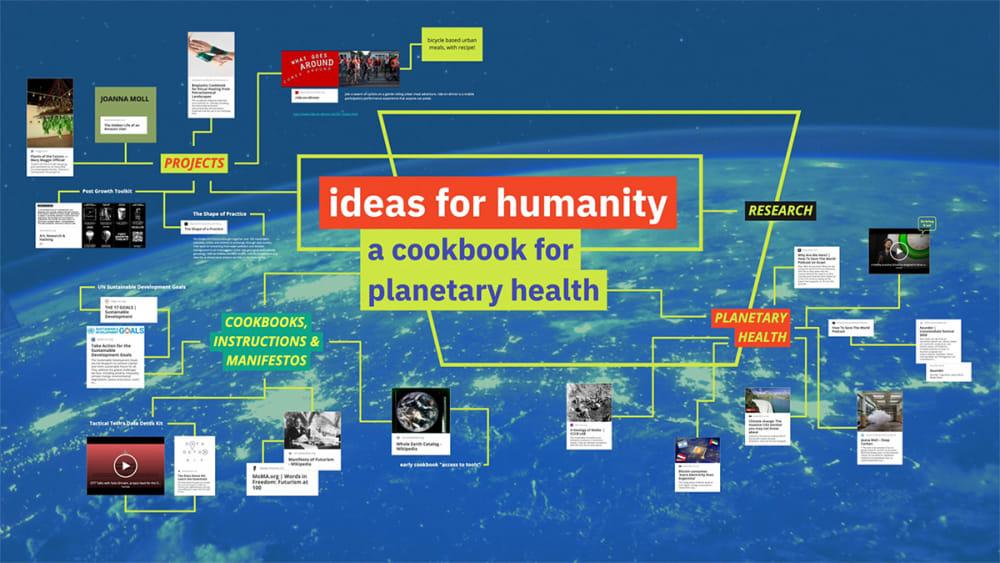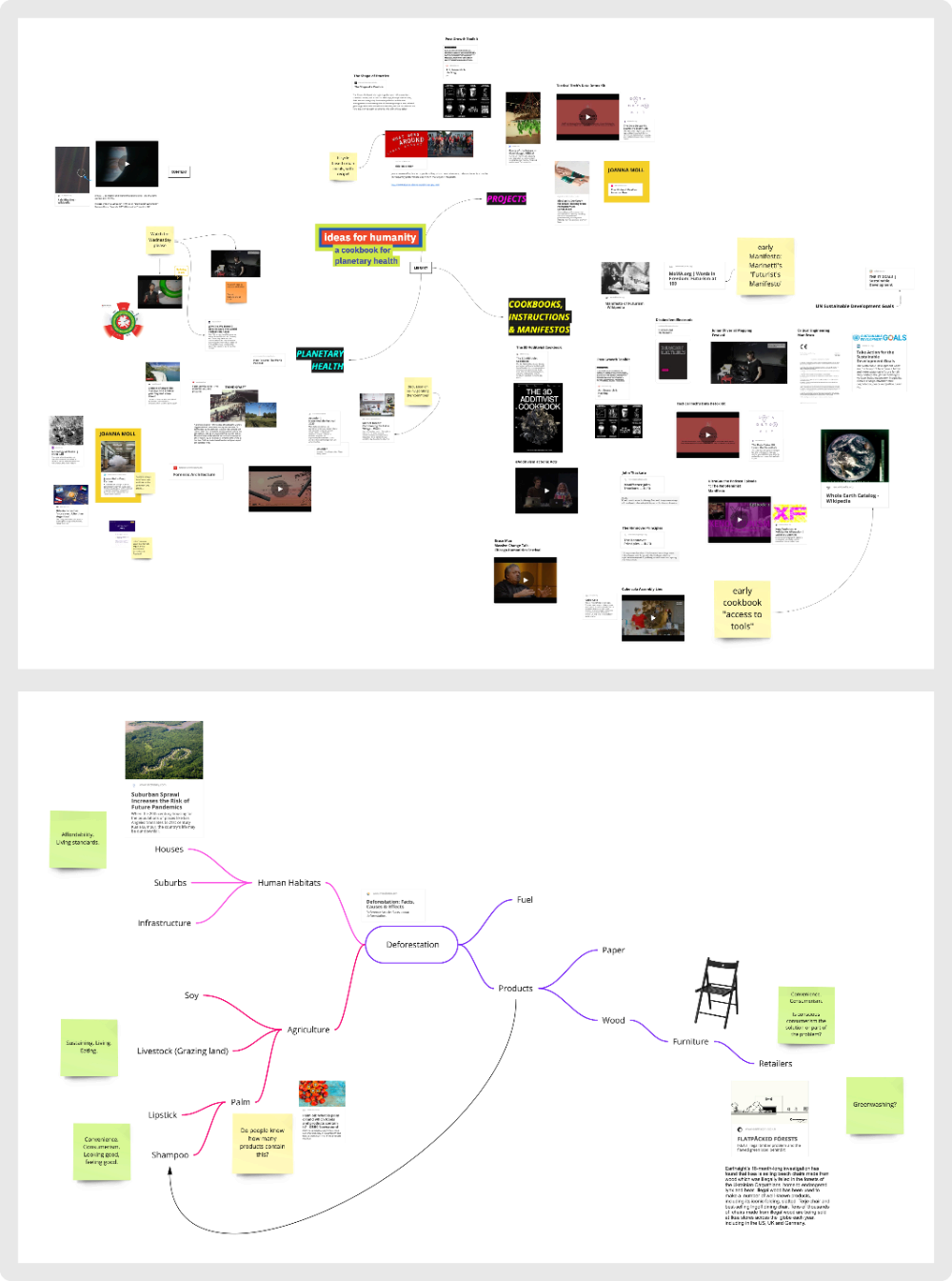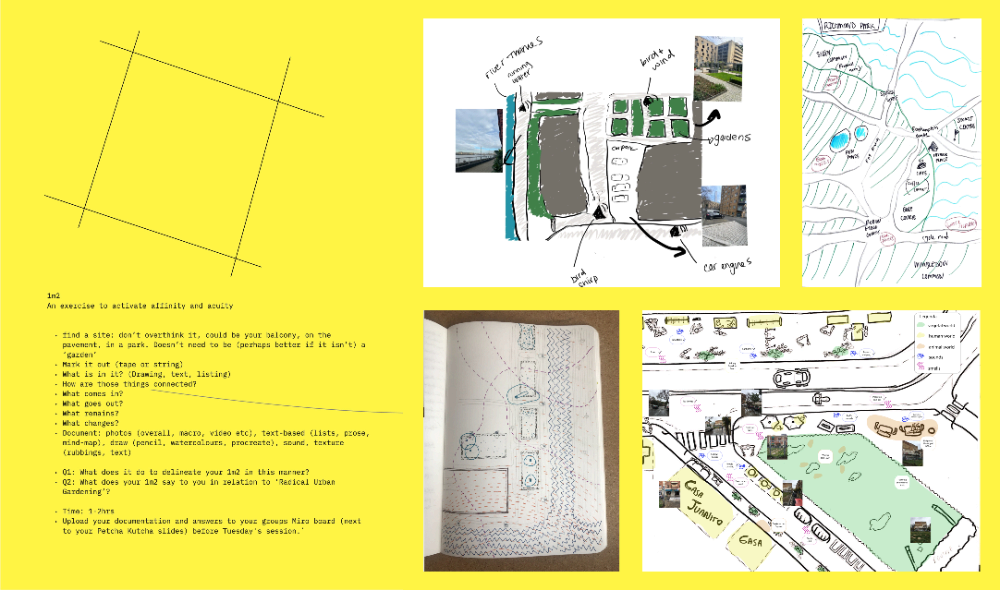Common Design Studio - A Cookbook for Planetary Health
My role in this project was organiser, facilitator and speaker. I worked closely with designers and educators from London, Barcelona and Melbourne. My colleagues and I have been building relationships with overseas partners for many years that resulted in productive exchanges for a handful of staff and students. Before the pandemic forced us online, we decided to create an annual design sprint using remote collaborative tools to expand the participation and give our students the chance to regularly work with emerging designers outside of London. The ambitions of the project were to help us and our students understand seemingly intractable, global problems from diverse local perspectives. Each year the theme would change but the overall design sprint framework remained.
This acts as both a case study in running design sprints and also a loose description of the framework we created, which was designed to be replicated in other contexts. My colleagues Tobias Revell and Dr Eva Verhoeven wrote a paper that dives into the pedagogic learning from this project.
Theme: Radical Gardening in Urban Spaces
Here is an example of a brief written by myself and colleagues:
This year the CDS theme continues the focus on the potential for design to encourage positive action for planetary health. The 3 participating institutions are all situated in cities with diverse characters, histories, and physical and human geography. One commonality between these (if not all) cities is their position as epicentres of continuous growth into nature - often with beginnings as small settlements cities evolve into a form of ‘urban terraforming’. The urban sprawl into former sites of ecological biodiversity is not easily reversed so cities create their own internal green spaces. Often these are either sanctioned public space with limited freedoms (by bylaws, etc) or privately owned with no access at all. Historically these have been, by design, for leisure or aesthetics, rather than any planetary benefit. In this design brief you are challenged to consider gardening as a radical and social act within urban spaces that considers design for the planet as well as diverse human needs. How can we design ‘recipes’ to encourage beneficial social and ecological use of existing green spaces or to reclaim and create new sites for radical gardening? Actions to prevent further environmental degradation as well as effects on human health are innately social and therefore these recipes need to be actioned communally. Continuing the format of last year’s CDS we ask you to work within the frame of a cookbook full of recipes that can incite positive collective action and encourage creative resistance within the framing of the radical garden space.
Here is the thematic briefing for this topic created by myself and my colleague, Laura Lovell-Anderson.
Recipes for a Planetary Health Cookbook
To avoid the pitfalls of design solutionism when addressing large scale problems we framed the outcomes as 'recipes for action' that had to be documented and tested in each locale before they could be added to an ongoing Planetary Health Cookbook. The recipes could take many forms including field guides, advise, hacks, tips and tricks, tutorials, cautionary tales, coping mechanisms, training exercises, manifestos or collective actions.

The idea of recipes appealed to us as the project organisers for a number of reasons - recipes should be designed as simple, accessible instructions; they require testing and iteration by the recipe designer; they often (but not always) include locally specific ingredients and cultural or social context; and there is a long history of radical cookbooks used in the arts and social activism.
Structure
The two-week intensive design sprint was fully online with synchronous and asynchronous components. Each day there were two hours of synchronous activities that included briefings, creating teams, icebreakers, introducing the theme and problem, support sessions with visiting domain experts, and sharing and reviewing outcomes. Outside of that time the groups met to work on production and prototyping concepts. Student groups were designed to have a mixture of students from London, Barcelona and Australia so that they benefitted from the diverse perspectives on the theme.
Mapping the problem space
 Mapping exercises were a significant part of the process throughout the design sprint. We encouraged students to map the problem domain from a conceptual and research perspective. We also introduced systems mapping techniques to evaluate factors surrounding a given issue and find the leverage points that will affect the overall system behaviour.
Mapping exercises were a significant part of the process throughout the design sprint. We encouraged students to map the problem domain from a conceptual and research perspective. We also introduced systems mapping techniques to evaluate factors surrounding a given issue and find the leverage points that will affect the overall system behaviour.
Design Protocol
For the 2022 edition of CDS, we introduced a 'protocol' that the students could choose to follow. This was way of structuring activities that reflects modifies a traditional design process. The protocol had four stages:
- Drift: EXPLORE
Follow more than human agents (e.g., a cat, a dog, a pigeon, the sun, an AI) to identify an urban site or condition where nature proliferates. - Mapping: UNDERSTAND
Devise a shared method of mapping both the drift and the discovered site/s. Take into account the involved bodies, time and scale to further introduce a MTH (more than human) angle. - Projection: PROPOSE
Make a projective operation on your map, one that proliferates the mapped condition towards a desired, radical goal. - Action: ENACT
Through an onsite action, using your body/ies and any necessary items (including other bodies), enact a way to transform reality based on that radical desire.
Each stage heavily relied on mapping and visualising activities that took place in the physical spaces of each student group. These were used to share interpretations of their respective urban spaces from the perspective of a 'more-than-human' agent. This leans on the idea from systems theory that the inanimate elements in an ecosystem can have equal, if not greater affects on the overall behaviour of that system.

The maps were also used to constrain the possible interventions into large scale problems and keep them to a local and situated context.
Barcelona and Melbourne Design Week
The outcomes of the project were a collection of actionable recipes that were tested in each student's location. Each project had a graphical recipe card that was clear and concise, as well as a video documenting its use. Across 2021 and 2022, the outcomes were presented in pop-up installations at the Melbourne and Barcelona Design Weeks. Myself and 3 other colleagues and students also attended a remote talk during the installation.

See the latest student outcomes and read an article written about the project on the UAL website.